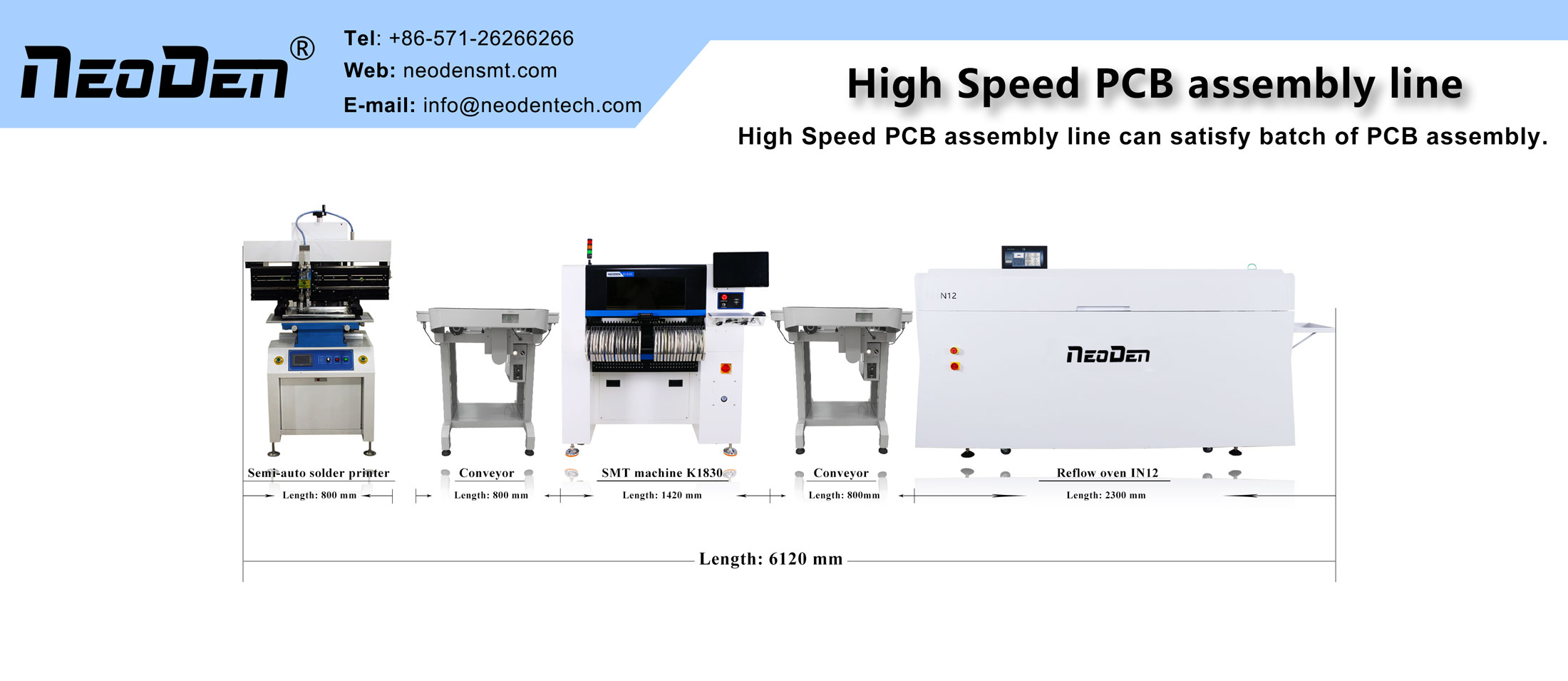1. The weight of the board itself will cause the board depression deformation
General reflow oven will use the chain to drive the board forward, that is, the two sides of the board as a fulcrum to support the entire board.
If there are too heavy parts on the board, or the size of the board is too large, it will show the middle depression because of its own weight, causing the board to bend.
2. The depth of the V-Cut and the connecting strip will affect the deformation of the board.
Basically, V-Cut is the culprit of destroying the structure of the board, because V-Cut is to cut grooves on a large sheet of the original board, so the V-Cut area is prone to deformation.
The effect of lamination material, structure and graphics on board deformation.
PCB board is made of core board and semi-cured sheet and outer copper foil pressed together, where the core board and copper foil are deformed by heat when pressed together, and the amount of deformation depends on the coefficient of thermal expansion (CTE) of the two materials.
The coefficient of thermal expansion (CTE) of copper foil is about 17X10-6; while the Z-directional CTE of ordinary FR-4 substrate is (50~70) X10-6 under Tg point; (250~350) X10-6 above TG point, and the X-directional CTE is generally similar to that of copper foil due to the presence of glass cloth.
Deformation caused during PCB board processing.
PCB board processing process deformation causes are very complex can be divided into thermal stress and mechanical stress caused by two kinds of stress.
Among them, thermal stress is mainly generated in the process of pressing together, mechanical stress is mainly generated in the board stacking, handling, baking process. The following is a brief discussion of the process sequence.
1. Laminate incoming material.
Laminate are double-sided, symmetrical structure, no graphics, copper foil and glass cloth CTE is not much different, so in the process of pressing together almost no deformation caused by different CTE.
However, the large size of the laminate press and the temperature difference between different areas of the hot plate can lead to slight differences in the speed and degree of resin curing in different areas of the lamination process, as well as large differences in the dynamic viscosity at different heating rates, so there will also be local stresses due to differences in the curing process.
Generally, this stress will be maintained in equilibrium after the lamination, but will be gradually released in the future processing to produce deformation.
2. Lamination.
PCB lamination process is the main process to generate thermal stress, similar to the laminate lamination, will also generate local stress brought about by differences in the curing process, PCB board due to thicker, graphic distribution, more semi-cured sheet, etc., its thermal stress will also be more difficult to eliminate than the copper laminate.
The stresses present in the PCB board are released in the subsequent processes such as drilling, shaping or grilling, resulting in deformation of the board.
3. Baking processes such as solder resist and character.
As solder resist ink curing can not be stacked on top of each other, so the PCB board will be placed vertically in the rack baking board curing, solder resist temperature of about 150 ℃, just above the Tg point of low Tg material, Tg point above the resin for high elastic state, the board is easy to deformation under the effect of self-weight or strong wind oven.
4. Hot air solder leveling.
Ordinary board hot air solder leveling furnace temperature of 225 ℃ ~ 265 ℃, time for 3S-6S. hot air temperature of 280 ℃ ~ 300 ℃.
Solder leveling board from room temperature into the furnace, out of the furnace within two minutes and then room temperature post-processing water washing. The entire hot air solder leveling process for the sudden hot and cold process.
Because the board material is different, and the structure is not uniform, in the hot and cold process is bound to thermal stress, resulting in micro-strain and overall deformation warpage.
5. Storage.
PCB board in the semi-finished stage of storage are generally vertical inserted in the shelf, the shelf tension adjustment is not appropriate, or storage process stacking put the board will make the board mechanical deformation. Especially for the 2.0mm below the thin board impact is more serious.
In addition to the above factors, there are many factors that affect the PCB board deformation.
Post time: Sep-01-2022

